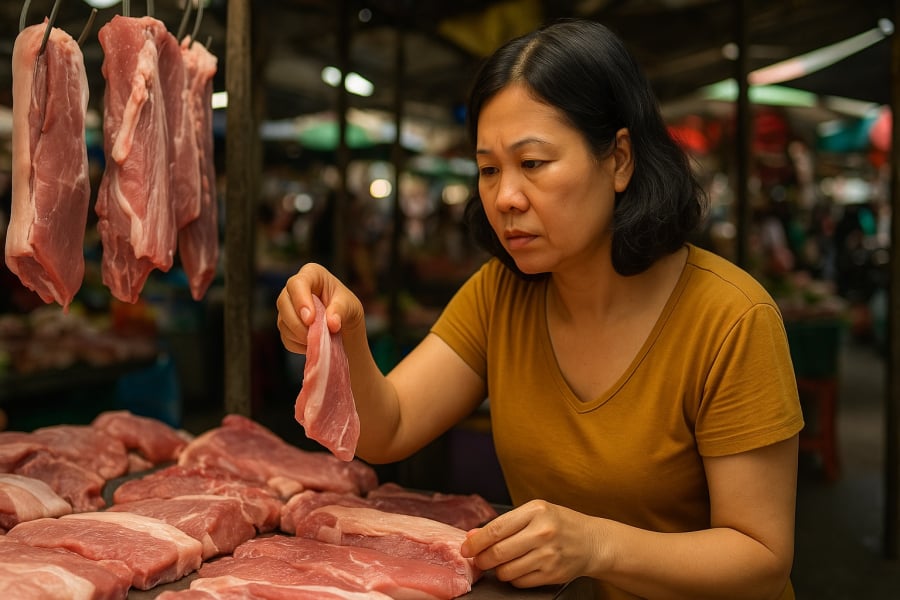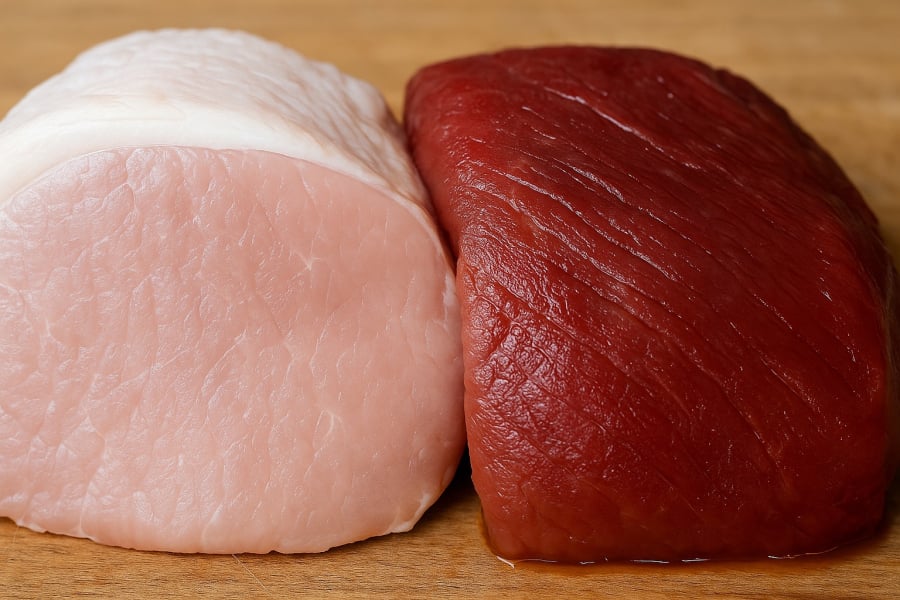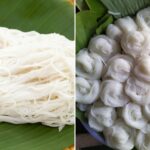Recently, authorities in Hanoi have consecutively detected and handled multiple cases of trading and consuming diseased pork in local markets and eateries. Notably, at a slaughterhouse in Khanh Ha, Thuong Tin district, officials discovered 45 live pigs showing signs of African swine fever, along with over 1.5 tons of already-slaughtered meat and offal.
Less than a day later, at Phuong Khoang market, hundreds of kilograms of foul-smelling, abnormally discolored meat were also found at the stalls. These incidents serve as a stark reminder of the pervasive presence of unsafe food in familiar markets, where thousands of families shop daily, trusting in the safety of the products.
Pork is a staple in Vietnamese cuisine, accounting for over 73% of the country’s total meat consumption. However, due to its ubiquitous nature, pork is also susceptible to adulteration, chemical treatment, or deceptive practices aimed at deceiving consumers. In this context, understanding how to select safe meat is a crucial skill for any homemaker.
Herbalist Bui Dac Sang (from the Vietnam Academy of Science and Technology and the Hanoi Oriental Medicine Association) has offered a set of principles, the “4 DON’Ts,” which are highly practical and easily applicable guidelines to help homemakers choose truly safe and clean meat.

Don’t Buy Meat of Unknown Origin
Safe meat always comes with a clear source. Prioritize purchasing from supermarkets or stores with health certificates, or from long-established, familiar stalls in the market. Fresh meat will have a color ranging from light pink to bright red, with a dry surface free from moisture or slime. A simple test is to gently press the meat with your finger; if it has good elasticity and doesn’t leave an indentation, it’s fresh. Additionally, wholesome meat has a characteristic odor that isn’t rancid or strange. If you detect a slight foul odor when rinsing or notice an abnormally pale color, it’s best to avoid purchasing it.
Avoid Super Lean Meat, Suspect of Weight Gain Treatments
Super lean meat is often an indication of the use of clenbuterol or salbutamol—banned substances due to their harmful effects on health. This type of meat usually has a very thin layer of fat that is loose and may exude a yellow liquid. It has an abnormally bright red color, shiny fibers, and tends to release water when cut. During cooking, wholesome meat produces a clear broth with a pleasant aroma. In contrast, super lean meat often yields cloudy broth with an unpleasant smell, releases excessive water when stir-fried, and lacks the expected flavor.
Refrain from Choosing Chemically Treated Meat
To disguise spoiled meat as fresh, some traders use chemicals like borax or sodium nitrate, which are extremely harmful if consumed over time. Indicators of chemical treatment include meat that is abnormally bright red, lacking its natural sticky texture, with stiff and inelastic fibers. When cut open, the meat may appear mushy, with liquid and a slight darkening of color, and a foul odor. The broth produced from this type of meat is often cloudy, and the fat floats in small circles instead of forming a large layer of scum—a telltale sign of chemical treatment.

Avoid Meat with White Granules—a Sign of Cysticercosis
One of the most serious yet easily overlooked risks is meat infected with cysticercosis, or “rice grain disease.” When buying meat, especially cuts like shoulder, thigh, or head meat, carefully examine the fibers. If you notice small white granules resembling glutinous rice grains embedded within the meat, these are cysticerci, and the meat should be absolutely avoided, even if cooked.
Cysticercosis can cause damage to the nervous system, eyes, lungs, and other organs if inadvertently ingested through food.
Some Additional Notes on Meat Storage and Preparation
Apart from selecting meat wisely, proper storage is crucial. If not used immediately, keep it in the chiller at 0–5°C and consume within 1–2 days. For longer storage, freeze the meat at -18°C to maintain its freshness. When cooking, ensure the meat is thoroughly cooked to destroy bacteria and parasites. Never consume raw meat dishes, such as blood pudding, rare steak, or undercooked meat. If, during cooking, the meat emits an odor resembling antibiotics, it’s possible that the pig was injected with drugs before slaughter, and it should be discarded to prevent food poisoning.
Conclusion: A Little Caution Goes a Long Way
Choosing safe meat isn’t just a habit; it’s a responsibility—for your health and that of your loved ones. By being a little more discerning and cautious, homemakers can effectively safeguard themselves and their families in today’s risky food market.
“A wise homemaker is not just one who can cook delicious meals, but one who knows how to protect the family’s health through safe food choices,” says herbalist Bui Dac Sang.
“The Ultimate Guide to Buying Bun: How to Spot the Difference Between Clean and Chemical-Laden Noodles”
“The addition of harmful substances such as borax, fluorescent agents, and preservatives is a common practice in bun production. These additives are used to enhance the texture and appearance of the noodles, making them chewier and brighter in color, and extending their shelf life. However, these chemicals pose a significant risk to consumers’ health, and it is important to be aware of their presence and potential dangers.”
The 12 Fruits and Vegetables with the Highest Pesticide Residues in 2025: A Shopping Awareness Guide for the Health-Conscious Shopper.
Are you aware that not all produce that looks fresh and appealing at the market or grocery store is actually safe? In 2025, the United States released a list of the 12 types of fruits and vegetables with the highest pesticide residues. Read on to learn more and make smarter choices to protect your family’s health!



































